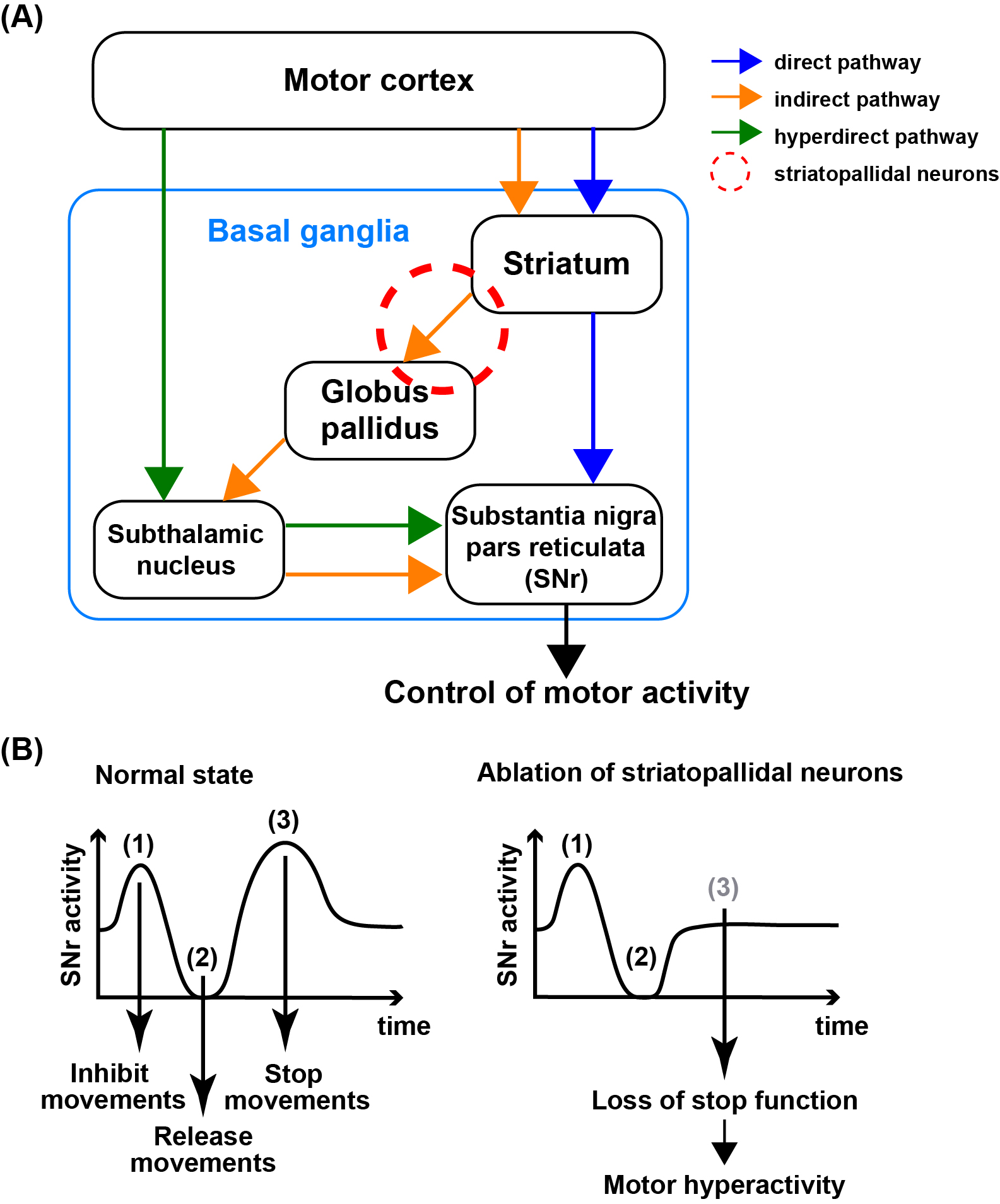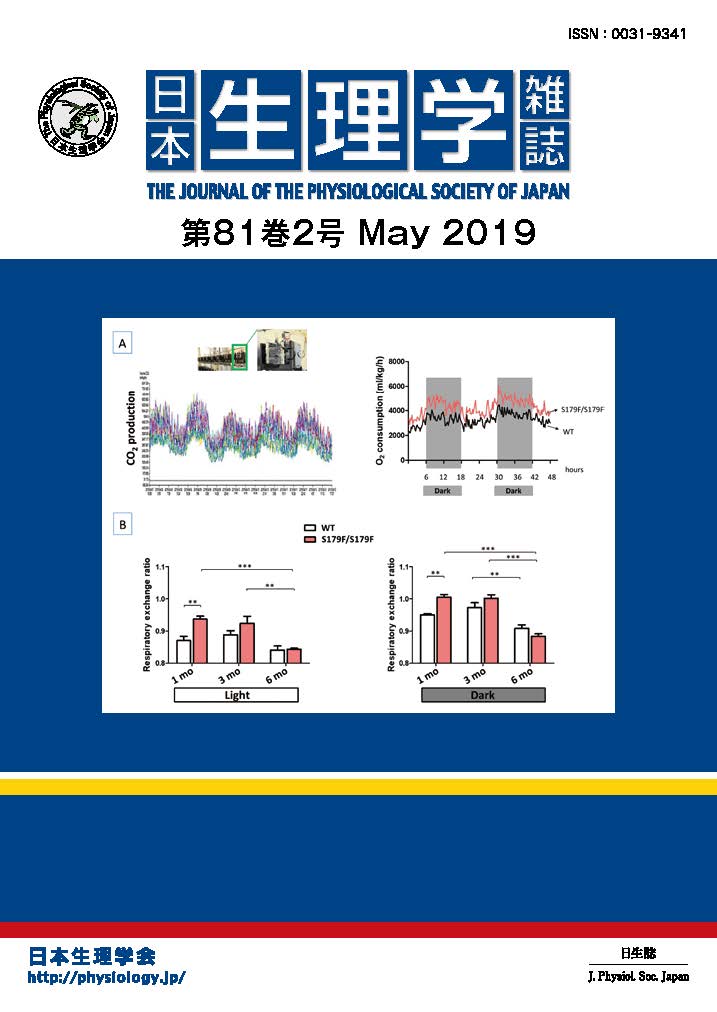The basal ganglia control voluntary movements through three pathways: the direct, the indirect and the hyperdirect pathways (Figure A). Our previous study showed that ablation of striatopallidal neurons in the indirect pathways (circled by red dashed lines in Figure A) by transgenic mice technique induced motor hyperactivity. In the widely accepted model of the basal ganglia, the direct pathway is supposed to suppress the activity of the output station, the substantia nigra pars reticulata (SNr). On the other hand, striatopallidal neurons are supposed to activate the SNr generally and suppress motor activity.
To elucidate the mechanism underlying the motor hyperactivity in striatopallidal ablated transgenic mice, we examined neuronal activity in the SNr. The ablation of striatopallidal neurons has given little effect on spontaneous activity in the SNr. However, response patterns in the SNr to motor cortical stimulation have been dramatically changed. Motor cortical stimulation has induced a triphasic response composed of early excitation, inhibition and late excitation in normal condition (Figure B, left panel). In contrast, the cortically evoked late excitation has been lost in striatopallidal ablated mice (Figure B, right panel). Thus, the loss of the cortically evoked late excitation in the SNr seems to be responsible for motor hyperactivity. These observations suggest that phasic late excitation in the SNr through striatopallidal neurons plays a key role to stop movements. Sano H., et al., J Neurosci, 33(17), 7583-7594, 2013
Figure legend
(A) The current model of basal ganglia circuitry.
The three pathways exert different effect on activity in the substantia nigra pars reticulata (SNr) and control of movements.
(B) Phasic late excitation in the SNr plays a key role to stop movements.
Motor cortical stimulation induces a triphasic response composed of early excitation, inhibition and late excitation in the SNr in the normal state. The ablation of striatopallidal neurons diminishes late excitation in the SNr, and thus movements cannot be stopped, resulting motor hyperactivity.

























